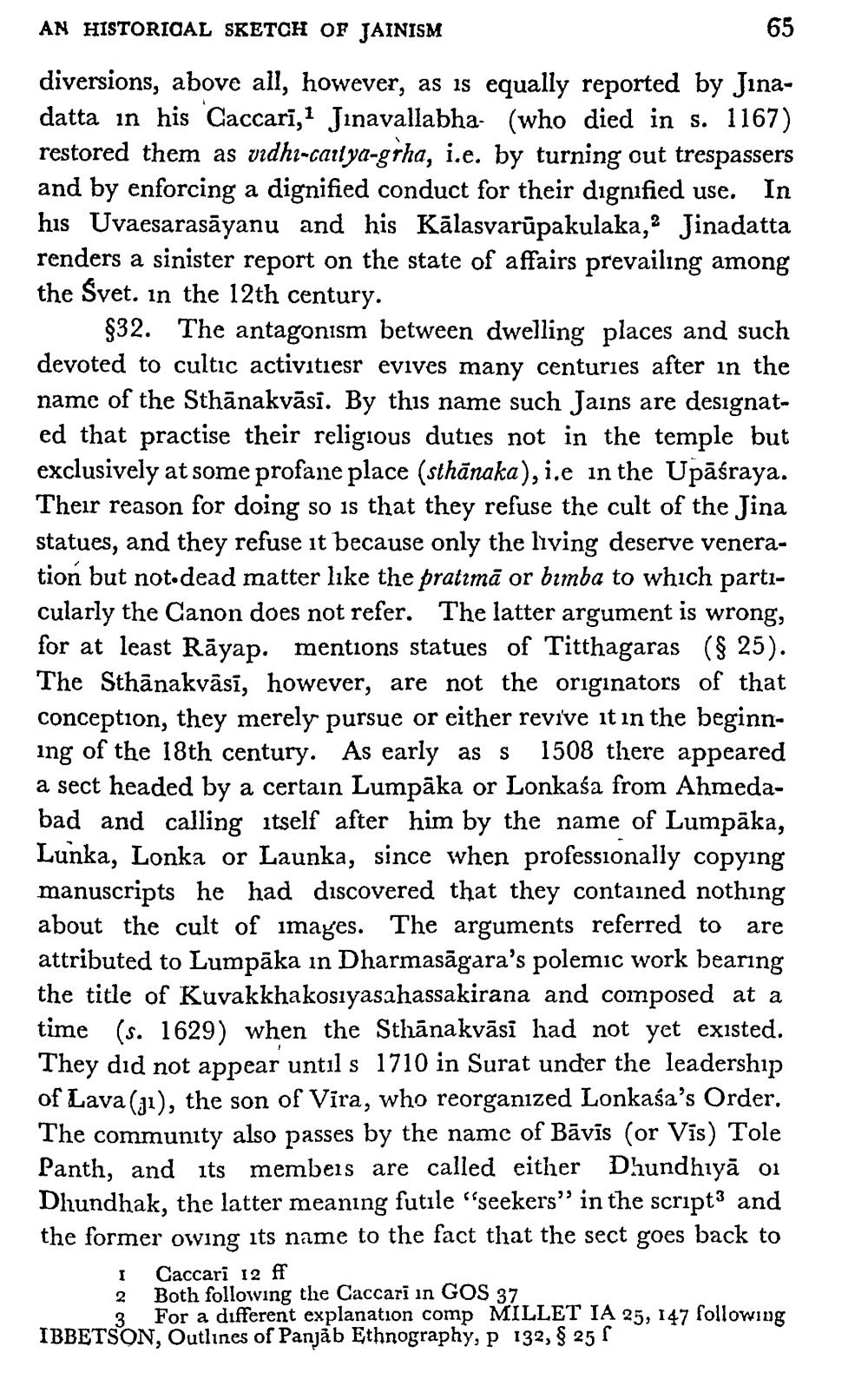________________
AN HISTORICAL SKETCH OF JAINISM
65
diversions, above all, however, as is equally reported by Jinadatta in his Caccari,1 Jinavallabha. (who died in s. 1167) restored them as vidhı-carlya-grha, i.e. by turning out trespassers and by enforcing a dignified conduct for their dignified use. In his Uvaesarasāyanu and his Kālasvarūpakulaka,2 Jinadatta renders a sinister report on the state of affairs prevailing among the Śyet. in the 12th century.
$32. The antagonism between dwelling places and such devoted to cultic activitiesr evives many centuries after in the name of the Sthānakvāsi. By this name such Jains are designated that practise their religious duties not in the temple but exclusively at some profane place (sthānaka), i.e in the Upāśraya. Their reason for doing so is that they refuse the cult of the Jina statues, and they refuse it because only the living deserve veneration but not.dead matter like the pratimā or bimba to which particularly the Canon does not refer. The latter argument is wrong, for at least Rāyap. mentions statues of Titthagaras ($ 25). The Sthānakyāsi, however, are not the originators of that conception, they merely pursue or either revive it in the beginning of the 18th century. As early as s 1508 there appeared a sect headed by a certain Lumpāka or Lonkaśa from Ahmedabad and calling itself after him by the name of Lumpāka, Lunka, Lonka or Launka, since when professionally copying manuscripts he had discovered that they contained nothing about the cult of images. The arguments referred to are attributed to Lumpāka in Dharmasāgara's polemic work bearing the title of Kuvakkhakosiyasahassakirana and composed at a time (s. 1629) when the Sthānakvāsi had not yet existed. They did not appear until s 1710 in Surat under the leadership of Lava (31), the son of Vira, who reorganized Lonkaśa's Order. The community also passes by the name of Bāvis (or Vis) Tole Panth, and its members are called either Dhundhiyā oi Dhundhak, the latter meaning futile "seekers” in the script3 and the former owing its name to the fact that the sect goes back to
I Caccari 12 ff 2. Both following the Caccari in GOS 37
3 For a different explanation comp MILLET IA 25, 147 following IBBETSON, Outlines of Panjab Ethnography, p 132, $ 25




